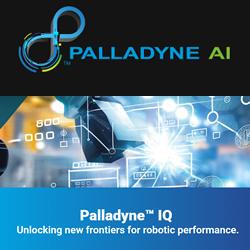Special Tradeshow Coverage for PACK Expo International
Reviving Japan's Dairy Industry, One Milking Robot at a Time
Discrete Manufacturers: Special Considerations for Robotics and Demand-Driven Supply Chain Solutions
Could the future of pizza be in the hands of robots?
Deep-Diving Robots Zap, Kill Invasive Lionfish
IMTS 2016 - Takeaways
Autonomous mobile robots can accomplish a variety of tasks.
Robot Sews First Complete Garment
Robodex Ghost Robotics™ Launches Ghost Minitaur™ Direct-Drive Legged Robot Platform
Crowdfunding Projects For October
Ford, U-M Accelerate Autonomous Vehicle Research with Ford Researchers In-House at New Robotics Lab on U-M Campus
Big Picture Processes Impact Efficient Lineside Delivery
Canada Is Using Lasers and Robots to Study a Mysterious Curling 'Frankenbroom'
A.I. and robotics could replace 6% of U.S. jobs by 2021
Robophysics: Robots in Motion
Records 2536 to 2550 of 3735
First | Previous | Next | Last
Featured Product

Palladyne IQ - Unlocking new frontiers for robotic performance.
Robotics and Automation - Featured Company

